Minerva
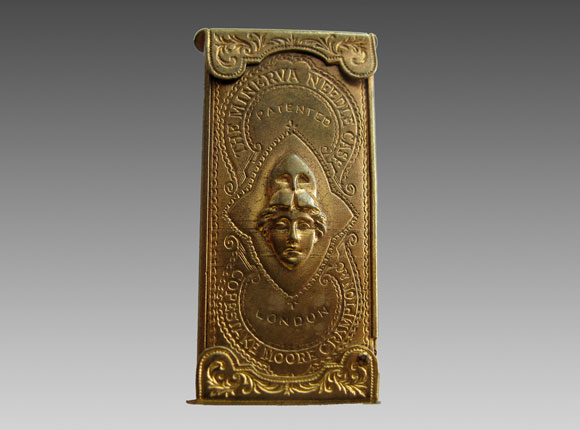
Needle Case

UK Patent 1869-2998 drawing
Design Details
Needle Case Type: |
Demi-Quad |
Patent/Registered to: |
William Avery, Redditch Manufacturer and Albert Fenton of the same place, Machinist |
Patent/Design Representation #: |
Mechanical Patent: #2998 |
Patent/Design Registration Date: |
October 14, 1869 |
Location of Patent/Design Registration: |
British Library - Business and Intellectual Property Centre – London |
Reference #: |
1869-2998, Figure 1 |
Dimensions: |
2.2 x 4.6 |
Material: |
Brass |
Name Variations: |
Copestake, Moore, Crampton & Co - London |
Other Variations: |
Different endcap decoration
With the words "Patented in America on the side
See other Demi-Quads |
US Patent |
US 1870-102471 |
Additional Photographs
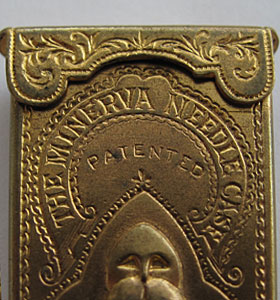
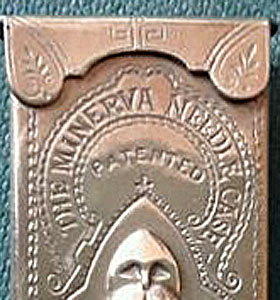
Needle case top half with name and different end cap decoration (photograph on right from eBay)
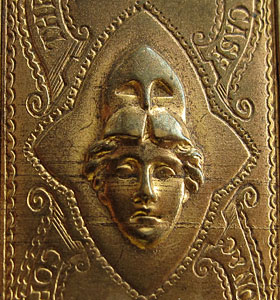
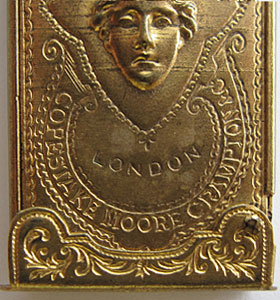
Needle case center and bottom half with signature detail

Version with the words "Patented in America" stamped on the side (photo from eBay)
Facts
Minerva was the Roman goddess of war, knowledge and trade. The Romans equated her with the Greek goddess Athena. Minerva is
often depicted with a helmet, shield, breastplate and spear.

History
Minerva arrived in Britain with the Roman Conquest in 43BC and remained long after the Roman occupation ended in 410 AD. A temple to
Minerva was constructed in the town of Bath in 60-70 AD near the area’s natural hot springs. In the 2nd century AD the Minerva Shrine
shown below was carved into the sandstone quarry on the old Roman road in Handbridge, just south of the city of Chester. The Roman
fortress at Chester was considered one of the finest strategic outposts of the Roman Empire.

Miscellaneous
The English poet Lord Byron wrote the “Curse of Minerva” in 1811. In the poem Byron prophesized that Scotland would be cursed for the
deeds of Lord Elgin. During a visit to Athens, Byron wrote the poem after he learned that Lord Elgin, a Scotsman, acquired the Parthenon
Marbles (decorative panels originally part of the ancient Greek Parthenon on the acropolis) which were transported to England between 1802 and
1805. In 1816 Elgin sold the marbles to the British Parliament who subsequently presented them to the British Museum where they remain to
this day, now known as the Elgin Marbles. Byron lived from 1788 until 1824 during a period known as the Romantic Age of poetry.















